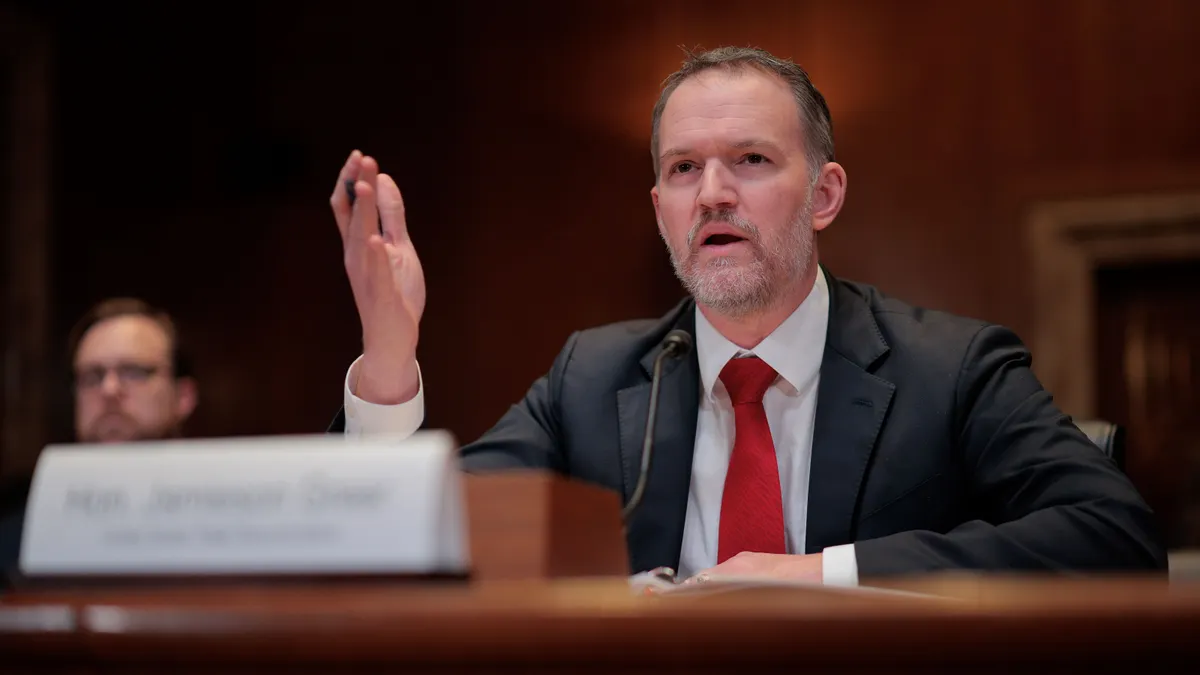This is a contributed op-ed written by Sarah Watt, senior director analyst at Gartner's supply chain practice. Opinions are the author's own.
With the Biden administration in place, sustainability and environmental issues are again on the government’s agenda. The U.S. has rejoined the Paris Climate Accord, and a transition away from fossil fuels is a key priority of the new administration.
Greenhouse gas emissions, and their tracking and eventual reduction, is a major challenge for supply chains. Many organizations are just capturing GHG emissions from their own operations, but the most significant impacts are typically in the supply chain.
The main burden of this challenge falls on procurement leaders. Their task is to utilize responsible-sourcing activities to identify and correct poor practices. But they must also go a step further and encourage suppliers to limit environmental impacts.
There’s a variety of approaches to responsible sourcing which can make things confusing. However, there’s five questions all procurement leaders should be able to answer when designing their specific responsible-sourcing program.
Responsible-sourcing programs do not have unlimited resources. Procurement leaders must prioritize suppliers by risk or impact to act where it matters the most.
Question No. 1: What should we focus on?
Organizations have many reasons to implement responsible sourcing. The starting point for many programs is to protect the brand, ensure business continuity and to meet customer requirements by checking labor, environmental, health and safety compliance in the value chain (basic compliance).
Some organizations go further, for example, by expecting that their suppliers pay a living wage as opposed to a minimum one. This would be a compliance-plus approach. We also see supply chains starting to actively track sustainability topics with tier 1 suppliers. Lastly, some organizations focus on ecosystem impacts through the value chain, such as addressing deforestation.
Procurement leaders must prioritize suppliers by risk or impact to act where it matters the most.

Depending on what their companies are aiming for, procurement leaders must define the scope of their responsible-sourcing program. If the goal is to just meet legal obligations, the company will avoid legal challenges. But this basic approach doesn’t provide any differentiation to customers or stakeholders, and it is often a condition of business or being able to submit a tender.
Organizations that want to use sustainable sourcing to create a competitive advantage need to aim higher by, for example, collecting sustainability data (tier-1 focused) or ecosystem data (environmental-impact focused, beyond tier 1) from the supply chain. These approaches demonstrate to stakeholders — particularly investors and customers — that pressing climate change and broader environmental concerns are being addressed.
Organizations whose supply chains have a significant and material impact on the environment, such as those connected to agricultural, manufacturing and extractives industries, might want to take a broader view.
Many already invest or run initiatives that will enable the long-term sustainability of supply chains, such as programs for reduced water consumption or regenerative agriculture. These organizations know that their long-term growth and prosperity is reliant on stable environmental ecosystems.

Question No. 2: How far does our program reach?
Once the scope of the responsible-sourcing program has been defined, the second step is to decide on the level of process rigor.
For a basic compliance approach, organizations may just put in place a policy or choose to go as far as conducting audits. The level of due diligence varies depending on the resources available to the organization, perceived risk in the supply chain and the organization’s need for rigor.
For a sustainability-led approach, organizations tend to take a more collaborative route, asking suppliers to contribute to GHG-reduction goals.
Some organizations choose to look at environmental ecosystems through the value chain, where the focus is on monitoring, reducing impacts and, in some instances, taking a restorative approach.
Question No. 3: Which suppliers should be included?
Responsible-sourcing programs do not have unlimited resources.
Procurement leaders must prioritize suppliers by risk or impact, to act where it matters the most. Using spend alone for prioritization is a mistake, as it does not directly link to risk or impact.
It’s likely that some suppliers can’t meet the initial expectations. If significant failures against compliance requirements are identified, the supplier relationship can be suspended while remediation action takes place. This is often the case with significant labor failures, such as excessive work hours.
In some cases, suppliers need to develop the necessary capabilities to even measure against their targets. It is not uncommon to find suppliers that are unable to assess and allocate their GHG emissions. Buying organizations must assign resources to develop these supplier capabilities.
Starting at the earliest stage of the supplier life cycle, organizations should reflect their requirements in the bidding process, supplier selection, and onboarding processes for new and prospective suppliers.
Question No. 4: How will we make this relevant?
As procurement leaders begin designing their responsible-sourcing strategy, they must ask themselves how will they incorporate responsible-sourcing goals into the decision-making process of the function.
Without this step, the strategy will likely be relegated to the background and considered optional, with other short-term objectives — such as cost savings — taking precedence over it. For a responsible-sourcing strategy to be effective, it must be elevated to the same level as how companies think about business development: an expected medium-term strategy.
Using spend alone for prioritization is a mistake, as it does not directly link to risk or impact.

Starting at the earliest stage of the supplier life cycle, organizations should reflect their requirements in the bidding process, supplier selection, and onboarding processes for new and prospective suppliers. For established suppliers, responsible-sourcing requirements should be embedded into different areas, such as contracting, segmentation, performance management and the supplier collaboration agenda.
Changes to these processes, or inclusion of responsible-sourcing criteria, will vary greatly depending on the scope of the strategy.
To reduce GHG emissions, companies should include carbon disclosure requirements for prospective suppliers, so they can take that into consideration as they submit their proposals. The supplier-selection evaluation should incorporate the prospective suppliers’ impact for the emissions-reduction goals alongside other common factors, such as price and payment terms.
Question No. 5: How do we leverage external partners?
Procurement organizations can positively amplify their impact by collaborating with third-party organizations. There are four types of third-party, responsible-sourcing organizations: nongovernmental organizations, membership organizations, category-focused responsible-sourcing groups and technology vendors.
Membership organizations create scale by harmonizing around a single responsible-sourcing policy and audit approach. This means that suppliers don’t have the burden of multiple audits, as one audit satisfied multiple customers.
The complexity of responsible sourcing also means that procurement leaders are increasingly relying on vendor solutions to collect, process and monitor performance. This enables performance and risks to be seen in a single dashboard. Some vendors also have sub-tier capability, creating enhanced visibility across the value chain.
This story was first published in our weekly newsletter, Supply Chain Dive: Procurement. Sign up here.





















